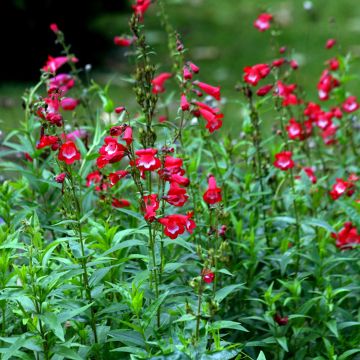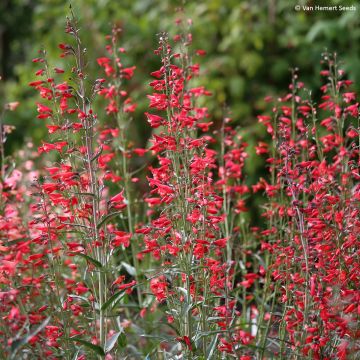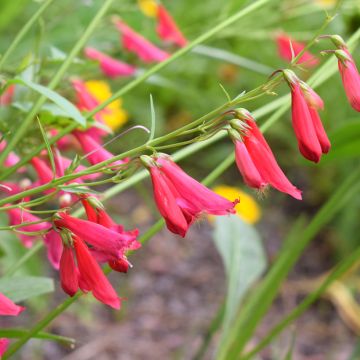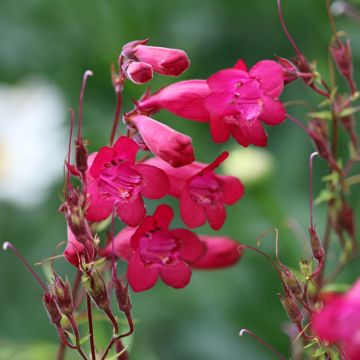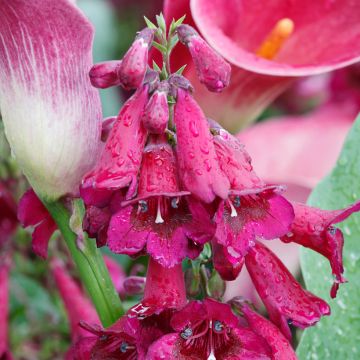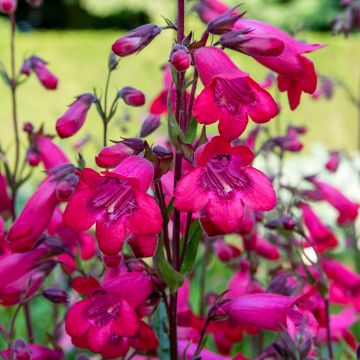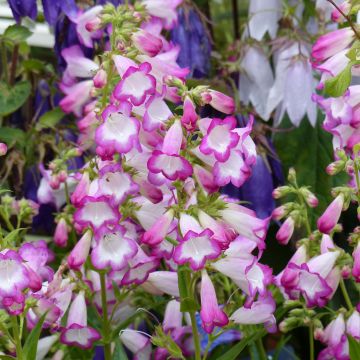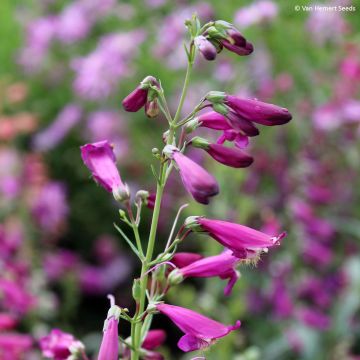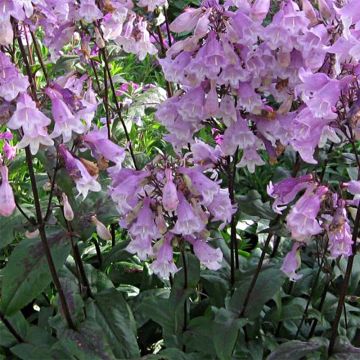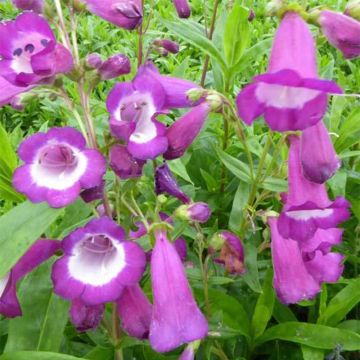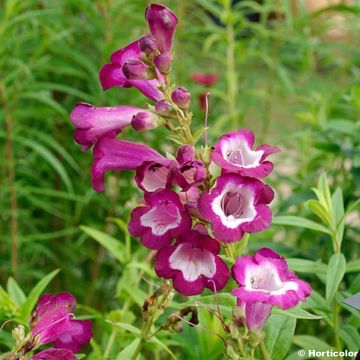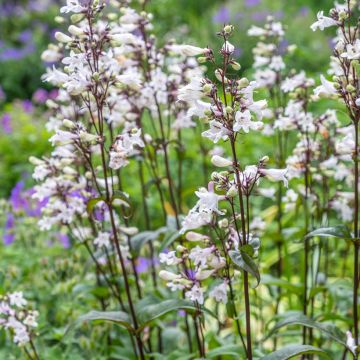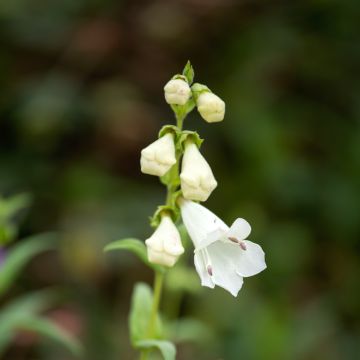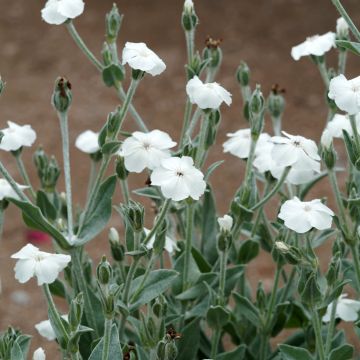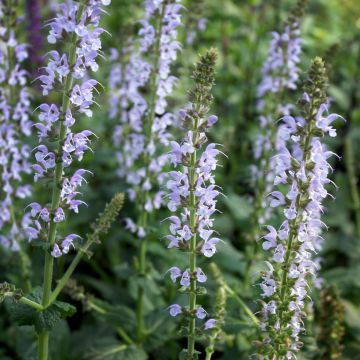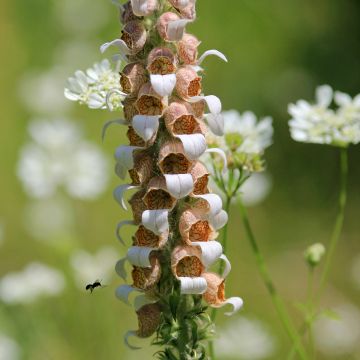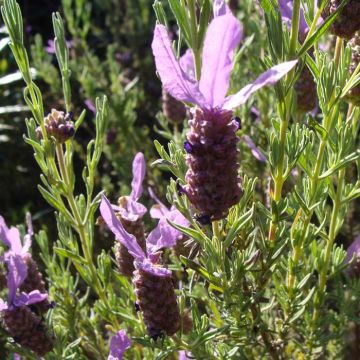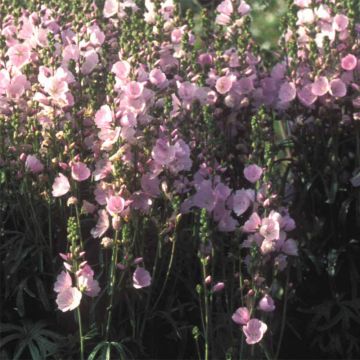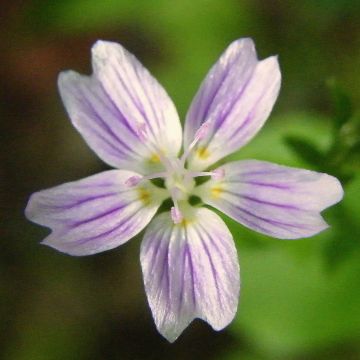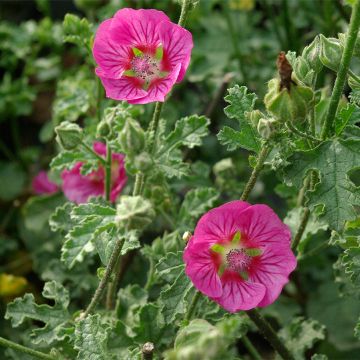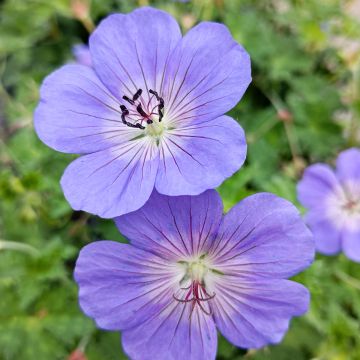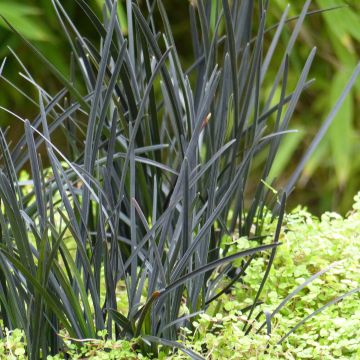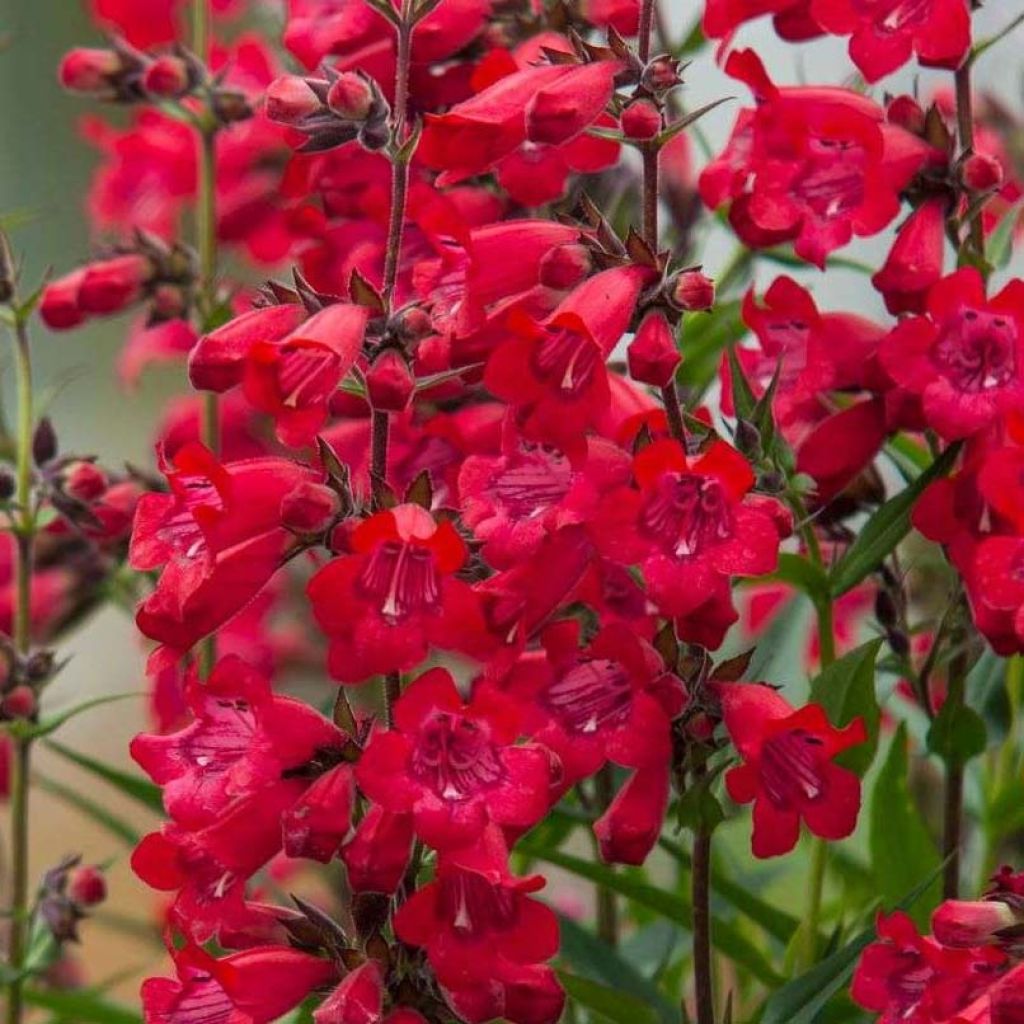

Penstemon Harlequin Red - Beardtongue
Penstemon Harlequin Red - Beardtongue
Penstemon Harlequin Red
Bellflower Beardtongue, Canterbury Bells Penstemon
Very vigorous, I eagerly await its full development.
Françoise, 09/06/2022
Why not try an alternative variety in stock?
View all →This plant carries a 12 months recovery warranty
More information
We guarantee the quality of our plants for a full growing cycle, and will replace at our expense any plant that fails to recover under normal climatic and planting conditions.
From €5.90 for pickup delivery and €6.90 for home delivery
Express home delivery from €8.90.
Does this plant fit my garden?
Set up your Plantfit profile →
Description
The Penstemon 'Harlequin Red' is a beautiful hybrid variety of penstemon with a dense habit. Throughout the summer, the plant produces upright spikes with countless raspberry red flowers in tube shape, topping a compact shrub of narrow leaves. With rapid growth, this refined penstemon will enhance your sunny borders in cool and rich soil and can withstand episodes of drought. While it is much more resistant and hardy than other varieties, it needs well-drained soil to survive the winter.
The 'Harlequin Red' penstemon belongs to the botanic family Plantaginaceae, which was reorganised a few years ago to include most plants previously in the Scrophulariaceae family including classic garden plants such as foxgloves and veronicas. Penstemons are perennials native to American prairies. Many are distinguished by their tall habit, rapid growth, and especially the profusion of often highly coloured flowers that they can produce for several months until the first frost.
'Harlequin Red' forms a dense and compact shrub with lanceolate leaves tapering to a point, semi-evergreen. The well-erect spikes emerge between June and October and are filled with leaves on their lower half. They bear numerous beautiful, deep red flowers to raspberry pink on their upper half. Their tubular shape is reminiscent of purple foxglove flowers, except that the end of the tube has large rounded teeth at the bottom and two at the top. The shrub will reach about 55 cm (22in) in height when in bloom and 40 cm (16in) in width.
Penstemon 'Harlequin Red' is a robust variety that tolerates humidity and heat better than many other varieties of penstemon. It thrives in any soil, cool and light, even relatively poor, provided drainage is correct. Winter moisture is the leading cause of the decline of penstemons in our gardens. Once well-rooted, 'Harlequin Red' can endure periods of drought. However, the lifespan of the plant remains relatively short, and it is advisable to divide the shrub every 2 to 4 years to preserve the variety.
This variety is ideal for wild, sunny borders or rock gardens that don't get too dry, where its rustic and refined charm will match other plants such as Aquilegia 'William Guiness', Alcalthaea 'Parkallee', Eryngium bourgatii, Acaena inermis 'Purpurea'. It will complement grasses such as Quaking Grass (Briza media), with their graceful swaying spikes in the wind, and the sturdy Panicum 'Kulsenmoor' with its vivid autumn colours. It also performs excellently in containers.
Report an error about the product description
Penstemon Harlequin Red - Beardtongue in pictures


Flowering
Foliage
Plant habit
Botanical data
Penstemon
Harlequin Red
Plantaginaceae
Bellflower Beardtongue, Canterbury Bells Penstemon
Cultivar or hybrid
Other Penstemon
Planting and care
Penstemon 'Harlequin Red' is a plant that can tolerate temperatures as low as -12 to -15°C (10.4 to 5°F) for short periods, but only if the soil is well-drained in winter and the base is protected with a thick layer of leaves or straw. Wet and heavy soils in winter are not good for it, but they can adapt well to good, well-drained garden soil.
To grow hybrid beardtongues successfully, it is important to have suitable soil. These mountainous plants prefer rich, light, fresh to occasionally dry soils that are well-drained, especially in winter. They don't do well in hot summers or excessively dry situations. In extremely wet soils, they tend to rot quickly. In cool climates, it's best to place the plants in a warm and sunny position, elevated and sheltered from cold winds (south or west exposure). In hot climates, it's better to choose a cool and semi-shaded exposure. In very cold regions, it's advisable to take stem cuttings in autumn.
Penstemon doesn't have any specific diseases. It requires minimal maintenance, such as removing faded flowers in autumn and slightly shortening the deflowered stems without cutting them to the ground, especially in humid regions. The foliage plays an important role in humidity regulation. Similarly to shrubby salvias, it's best to wait until spring is well-established (March-April) to shorten branches whose foliage has been damaged by the cold. If summer is dry, regular watering is necessary to support flowering. In the coldest regions, it's advisable to cover the base with glass or a cold frame to protect it from severe cold. Divide your penstemons every three or four years to rejuvenate them, but it's better to wait until spring to perform this operation.
Planting period
Intended location
Care
-
, onOrder confirmed
Reply from on Promesse de fleurs
Summer flowering perennials
Haven't found what you were looking for?
Hardiness is the lowest winter temperature a plant can endure without suffering serious damage or even dying. However, hardiness is affected by location (a sheltered area, such as a patio), protection (winter cover) and soil type (hardiness is improved by well-drained soil).

Photo Sharing Terms & Conditions
In order to encourage gardeners to interact and share their experiences, Promesse de fleurs offers various media enabling content to be uploaded onto its Site - in particular via the ‘Photo sharing’ module.
The User agrees to refrain from:
- Posting any content that is illegal, prejudicial, insulting, racist, inciteful to hatred, revisionist, contrary to public decency, that infringes on privacy or on the privacy rights of third parties, in particular the publicity rights of persons and goods, intellectual property rights, or the right to privacy.
- Submitting content on behalf of a third party;
- Impersonate the identity of a third party and/or publish any personal information about a third party;
In general, the User undertakes to refrain from any unethical behaviour.
All Content (in particular text, comments, files, images, photos, videos, creative works, etc.), which may be subject to property or intellectual property rights, image or other private rights, shall remain the property of the User, subject to the limited rights granted by the terms of the licence granted by Promesse de fleurs as stated below. Users are at liberty to publish or not to publish such Content on the Site, notably via the ‘Photo Sharing’ facility, and accept that this Content shall be made public and freely accessible, notably on the Internet.
Users further acknowledge, undertake to have ,and guarantee that they hold all necessary rights and permissions to publish such material on the Site, in particular with regard to the legislation in force pertaining to any privacy, property, intellectual property, image, or contractual rights, or rights of any other nature. By publishing such Content on the Site, Users acknowledge accepting full liability as publishers of the Content within the meaning of the law, and grant Promesse de fleurs, free of charge, an inclusive, worldwide licence for the said Content for the entire duration of its publication, including all reproduction, representation, up/downloading, displaying, performing, transmission, and storage rights.
Users also grant permission for their name to be linked to the Content and accept that this link may not always be made available.
By engaging in posting material, Users consent to their Content becoming automatically accessible on the Internet, in particular on other sites and/or blogs and/or web pages of the Promesse de fleurs site, including in particular social pages and the Promesse de fleurs catalogue.
Users may secure the removal of entrusted content free of charge by issuing a simple request via our contact form.
The flowering period indicated on our website applies to countries and regions located in USDA zone 8 (France, the United Kingdom, Ireland, the Netherlands, etc.)
It will vary according to where you live:
- In zones 9 to 10 (Italy, Spain, Greece, etc.), flowering will occur about 2 to 4 weeks earlier.
- In zones 6 to 7 (Germany, Poland, Slovenia, and lower mountainous regions), flowering will be delayed by 2 to 3 weeks.
- In zone 5 (Central Europe, Scandinavia), blooming will be delayed by 3 to 5 weeks.
In temperate climates, pruning of spring-flowering shrubs (forsythia, spireas, etc.) should be done just after flowering.
Pruning of summer-flowering shrubs (Indian Lilac, Perovskia, etc.) can be done in winter or spring.
In cold regions as well as with frost-sensitive plants, avoid pruning too early when severe frosts may still occur.
The planting period indicated on our website applies to countries and regions located in USDA zone 8 (France, United Kingdom, Ireland, Netherlands).
It will vary according to where you live:
- In Mediterranean zones (Marseille, Madrid, Milan, etc.), autumn and winter are the best planting periods.
- In continental zones (Strasbourg, Munich, Vienna, etc.), delay planting by 2 to 3 weeks in spring and bring it forward by 2 to 4 weeks in autumn.
- In mountainous regions (the Alps, Pyrenees, Carpathians, etc.), it is best to plant in late spring (May-June) or late summer (August-September).
The harvesting period indicated on our website applies to countries and regions in USDA zone 8 (France, England, Ireland, the Netherlands).
In colder areas (Scandinavia, Poland, Austria...) fruit and vegetable harvests are likely to be delayed by 3-4 weeks.
In warmer areas (Italy, Spain, Greece, etc.), harvesting will probably take place earlier, depending on weather conditions.
The sowing periods indicated on our website apply to countries and regions within USDA Zone 8 (France, UK, Ireland, Netherlands).
In colder areas (Scandinavia, Poland, Austria...), delay any outdoor sowing by 3-4 weeks, or sow under glass.
In warmer climes (Italy, Spain, Greece, etc.), bring outdoor sowing forward by a few weeks.

































